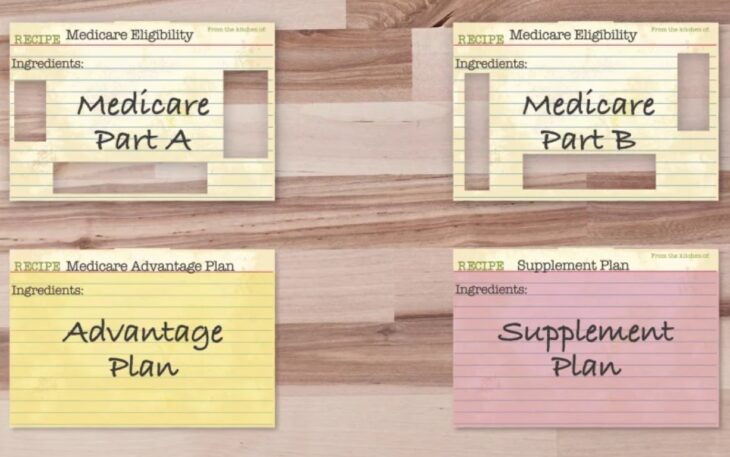Medicare is the United States national healthcare insurance that covers people over 65 years and, in some cases, younger people living with disabilities. The insurance covers quite a number of medical services, medical equipment and drug prescriptions in some cases. Medicare consists of different parts that you have to choose from.
While there is a lot of conflicting information on the web around this insurance, medicareschool.com can help you choose the right type of plan for your specific needs. The various parts of medicare cover certain services at the hospital.

Source: UPMC Health Plan
Medicare is basically divided into three main parts as follows:
- Original medicare, which has Part A and Part B
- Part C (Medicare Advantage Plan)
- Part D
Contents
1. Medicare Part A

Source: The Diabetes Times
It is often referred to as ‘hospital care’ or ‘hospitalization’ as it only covers inpatient costs at the hospital, hospice, long term care hospital and skilled nursing facility. It is further divided into a premium and a deductible.
Premium: Eligible for anyone who has worked for over ten years in the US without payment. It is free since the taxes paid during the working period goes towards covering this plan.
Deductible: It is applicable ‘per benefit period’, where you pay $1,484, then medicare pays 100% of the expenses for only 60 days after admission. After that, you will need to pay more premiums every day.
A Medicare workshop can help you better understand how Plan A deductible works.
2. Medicare Part B

Source: Health Facilities Management
This plan covers a large percentage of medical doctor’s services, outpatient services, medical equipment, lab tests, X-rays, preventive care and mental healthcare services, among other things. It is an elective cover, but most people prefer to use it for the services mentioned above.
The Costs here also include a premium and a deductible.
Premium: The monthly payment is about $148.50 per month, or more depending on your total household income. If you have a low income, the Medicaid services in your state can pay for your premiums.
Deductible: The annual deductible for this part is $203 and has a 20% coinsurance with no cap.
3. Medicare Part C

This plan allows you to get medical attention and benefits from a private healthcare provider tasked by the government to give medicare services. It offers similar medicare benefits as Part A and Part B but can have varying costs, rules and coverage restrictions that guide when and how you receive your benefits.
As a rule of thumb, you must have a medicare original to join this plan. That means you still have to pay for your plan B and A if applicable.
4. Medicare Part D

Source: Lighthouse Insurance Benefits
Part D is a prescription drug plan and can be sought from private insurance companies. It is an elective coverage but attracts a penalty if you fail to apply for coverage once the plan is ready. The premium and deductible monthly costs vary depending on the plan and different providers.
In a Medicare workshop, you’ll most likely learn the advantages of each part and what you can add to the original.
Benefits of Medicare Advantage Plan
Once you join this medicare plan, you get to pay your premiums directly to the insurance company, which liaises with Medicare to ensure your health care needs are taken care of. While typical healthcare benefits vary according to plan, you will get the following primary benefits with an advantage plan.

Source: Everyday Health
-
Convenience
This plan gives you an opportunity of choosing your preferred private insurance provider, allowing you to have a single, convenient plan for all your medical and drugs coverage. In addition, you will get the maximum out-of-pocket amount you may need to spend on several health expenses on each plan.
-
Benefits Coverage
A Medicare Advantage plan is sure to cover Part A and Part B besides prescription drug, vision, dental, and hearing benefits in some plans. It offers a comprehensive healthcare payment and covers you when unexpected illnesses occur.

Source: Healthline
-
Emergency Care
With any Medicare advantage plan, you’re entitled to healthcare coverage in any part of the United States, even out of your service area. This usually isn’t the case with Original Medicare unless you decide to pay much more premium.
-
It is Familiar
If you’ve been employed before and benefitted from the employer insurance plan, then you’ll have an easy time understanding the advantage plan as it works the same way. You will be able to see coinsurance, deductibles and other elements you’re familiar with.
With several options available, it’s a daunting experience to choose the right medicare plan. While there’s the standard part A and Part B, the above points will guide you on selecting the Advantage Plan, which has more to offer.

Source: Mobilmindz
Costs not Covered under Medicare
While Medicare covers more services, there are still a couple of things that are not covered. These include;
-
Dental Services

Source: Pasadena Health Center
Dental procedures such as filling, extraction, cleaning and dentures are not covered in this insurance plan. The only dental-related issues that it can cover are if it leads to an infection or severe damage due to an accident, and surgery is required.
-
Vision Services

Source: North Texas Vision Center
Routine eye checkups for contact lenses and glasses are not covered under medicare. It will only pay for an eye exam and a pair of glasses after surgery for the removal of a cataract.
Additional eye-related services covered include cataracts and glaucoma preventive exams. In simpler terms, optometrists aren’t covered except after cataract removals and ophthalmologists are covered, apart from regular eye exams.
-
Death Benefits

Source: The Blue Diamond Gallery
Medicare doesn’t provide any death benefits after the death of a beneficiary. For this, you can go for life insurance as you will receive some perks for the same.
-
Hearing Services

Source: NPR
Medicare doesn’t pay for hearing examinations and hearing aids. It can only cover exam costs if the doctor requests for them to diagnose what’s ailing you.
Conclusion
Medicare is a beneficial program, but you need to understand the different coverage choices before picking one. The care providers you choose and the manner in which to get the benefits will significantly save you from unwanted out-of-pocket costs. Perhaps you should attend a Medicare workshop to get informed on the dos and don’ts of this insurance.
